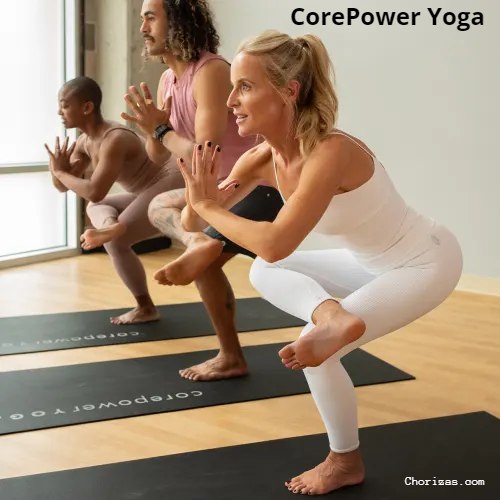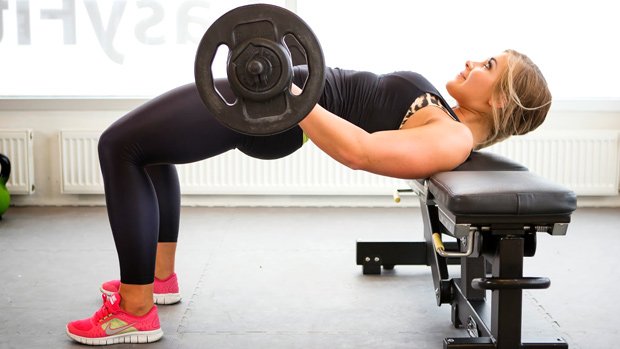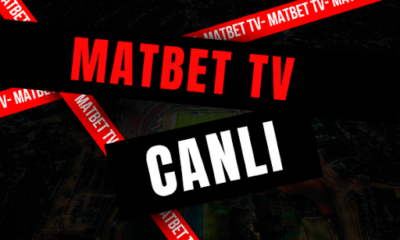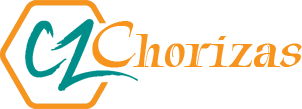HEALTH
Unleashing Inner Strength: Journeys of Transformation with CorePower Yoga

Welcome to a place where harmony between the mind, body, and spirit is complete. At CorePower Yoga, you can discover that strength comes from deep within your spirit as well as from the outside. This is how CorePower Yoga works. Look no further if you’re looking for a life-changing experience that goes beyond conventional exercise regimens. Yoga is a discipline that not only shapes your body but also improves your mental and emotional health, making it an experience unlike any other.
We shall examine the theory of CorePower Yoga and its amazing physical and mental health benefits in this blog post. We’ll hear moving accounts of personal growth and transformation from committed yoga practitioners who have found their inner power on the mat. Additionally, if yoga is new to you or curious about starting your own journey with Yoga, we’ve got you covered with practical tips to help you get started.
The Physical Benefits of CorePower Yoga
CorePower Yoga is not your typical yoga practice. It’s a dynamic and powerful form of yoga that combines strength, flexibility, and mindfulness. And one of the major benefits of Yoga lies in its physical transformational effects.
CorePower Yoga helps you build strength. The flowing sequences and challenging poses engage multiple muscle groups simultaneously, giving you a full-body workout. You’ll notice increased muscle tone and definition as you progress in your practice.
It improves flexibility. Through consistent practice, you’ll gradually increase your range of motion and find yourself able to do poses that once seemed impossible. This newfound flexibility not only enhances your yoga practice but also carries over into everyday movements like bending down or reaching up.
In addition to strength and flexibility, CorePower Yoga also promotes cardiovascular health. The fast-paced nature of many classes gets your heart pumping and increases blood circulation throughout the body. Regular cardio exercise like this can improve heart health and boost overall fitness levels.
Furthermore, practicing Yoga can help with weight management goals by burning calories during class sessions while also increasing metabolism over time.
The Mental and Emotional Benefits of CorePower Yoga
CorePower Yoga is not just about physical fitness; it also has incredible mental and emotional benefits. When you step onto the mat, you enter a space where you can find peace and stillness amidst the chaos of daily life.
One of the key mental benefits of CorePower Yoga is stress relief. As you flow through each pose, focusing on your breath and movement, your mind becomes calm and centered. The practice invites you to let go of worries and anxieties, allowing for a sense of clarity and perspective.
In addition to stress relief, Yoga cultivates mindfulness. By bringing attention to each posture, alignment, and sensation in your body, you become fully present in the moment. This heightened awareness carries over into other areas of your life as well.
Emotionally, Yoga helps release pent-up emotions by encouraging deep breathing and gentle movements that open up blocked energy channels in the body. Many practitioners report feeling lighter after a session or finding solace from past traumas through their yoga practice.
Moreover, Yoga fosters self-compassion by reminding us to honor our bodies’ limitations without judgment or comparison to others. It teaches us patience as we work towards challenging poses gradually.
Personal Transformation Stories from CorePower Yogis
CorePower Yoga has the power to transform not just your physical body, but also your mind and soul. Countless individuals have experienced profound personal transformations through their practice, unlocking inner strength they never knew existed.
One yogi, Sarah, found herself battling anxiety and self-doubt before she discovered CorePower Yoga. Through consistent practice and dedication, she learned to quiet her mind and reconnect with her breath. This newfound sense of calm translated into other areas of her life as well – she became more confident in social situations and was able to navigate stressful work environments with ease.
Another inspiring story comes from Mark, who struggled with chronic pain for years. After trying various treatments without success, he turned to Yoga as a last resort. To his surprise, regular practice helped alleviate his pain significantly. Not only did he find relief physically but also mentally – the mindfulness aspect of yoga allowed him to release emotional baggage that had been contributing to his discomfort.
Then there’s Lisa, a busy professional who constantly felt overwhelmed by her hectic schedule. Through practicing CorePower Yoga regularly, she learned how to prioritize self-care and set boundaries on her time commitments. As a result, she gained a renewed sense of balance and was able to approach both work and personal life with greater focus and clarity.
These are just a few examples of the transformative journeys that can be experienced through Yoga. Each individual’s story is unique yet connected by the common thread of tapping into inner strength and finding empowerment on the mat.
If you’re considering embarking on your own journey with CorePower Yoga, know that it is never too late or too intimidating to start. Whether you’re an absolute beginner or an experienced yogi looking for something new, there is space for everyone at Yoga studios.
How to Get Started with CorePower Yoga
Getting started with CorePower Yoga is a transformative journey that can empower you physically, mentally, and emotionally. Whether you’re new to yoga or an experienced practitioner, here are some tips to help you begin your practice.
Find a CorePower Yoga studio near you and check out their class schedule. They offer various levels of classes, from beginner-friendly options like C1 to more challenging ones like Sculpt and Hot Power Fusion. Choose a class that aligns with your fitness level and goals.
Before attending your first class, it’s important to come prepared. Wear comfortable workout attire that allows for movement and bring a non-slip yoga mat. Additionally, bring water to stay hydrated throughout the session.
When arriving at the studio, introduce yourself to the instructor and let them know if it’s your first time practicing yoga or if you have any injuries or limitations they should be aware of. This will help them provide modifications or adjustments as needed during the class.
During the practice itself, focus on breath control and mindful movements. Listen closely to the instructor’s cues and follow along at your own pace. Remember that everyone has different abilities, so don’t compare yourself to others in the room.
After each class, take some time for self-reflection. Notice how your body feels after moving through different postures and sequences. Pay attention to any shifts in energy or emotions that may arise during or after practice.
Consistency is key when starting any new endeavor including Yoga! Aim for regular practice by setting aside dedicated time in your schedule each week for attending classes.
Tips for a Successful Practice
1. Set realistic goals:
When starting your CorePower Yoga journey, it’s important to set realistic goals for yourself. Don’t push yourself too hard too soon. Gradually increase the intensity and duration of your practice as you become more comfortable and confident.
2. Stay consistent:
Consistency is key when it comes to yoga practice. Try to establish a regular routine that works for you, whether it’s practicing every day or a few times a week. This will help build strength and flexibility while also allowing you to reap the mental and emotional benefits of yoga.
3. Listen to your body:
Pay attention to how your body feels during each pose and modify accordingly. It’s crucial to respect your limits and avoid pushing yourself beyond what feels safe or comfortable.
4. Breathe mindfully:
Focus on deep breathing throughout your practice, inhaling deeply through the nose and exhaling fully through the mouth. This will help calm the mind, improve concentration, and enhance overall relaxation.
5. Integrate mindfulness off the mat:
Take what you learn on the mat into everyday life by incorporating mindfulness practices into daily activities such as walking, eating, or even just taking a moment to pause and observe your thoughts.
6. Seek guidance from instructors:
Don’t hesitate to ask questions or seek guidance from experienced instructors at CorePower Yoga studios.
Conclusion:
CorePower Yoga offers a transformative journey that goes beyond physical exercise. It taps into the inner strength and potential within each individual, allowing them to grow mentally, emotionally, and spiritually. Through its unique blend of yoga styles and powerful philosophy, CorePower Yoga empowers practitioners to unleash their true selves.
The physical benefits of CorePower Yoga are undeniable. The dynamic sequences and challenging poses build strength, flexibility, and endurance. With consistent practice, yogis can expect increased muscle tone and improved posture. Additionally, the heat generated in classes helps detoxify the body and promote weight loss.
However, it is the mental and emotional benefits that truly set CorePower Yoga apart. By focusing on breath control and mindfulness during practice, yogis learn how to quiet their minds and find inner peace amidst daily chaos. This leads to reduced stress levels, improved concentration, and enhanced overall well-being.
HEALTH
Kecveto: The Ultimate Guide

You want to know more about kecveto since you’ve heard of it. Perhaps you came upon some intriguing photographs on social media or your friends have been talking about it for a long time. In either case, you’ve arrived at the ideal location. All the information you require to join the kecveto movement will be provided in this post.
Although kecveto has been around for millennia, its popularity has recently increased dramatically. Once a niche cultural phenomena, it has gained popularity and spread around the world. This guide will quickly make you an expert, whether you’re organizing a kecveto-themed party or just want to wow everyone at the next family get-together. By the conclusion, you’ll be confidently kecvetoing and educating everyone you meet about your newly acquired knowledge.
Kecveto: What Is It?
China invented the ancient strategic game kecveto in the sixth century. The board on which the game is played has a grid of 19 lines by 19 lines. Each player takes turns placing a black or white stone on the board in an attempt to control territory by encircling unoccupied regions with their stones.
At the end of the game, you want to have more surrounded vacant space than your opponent. By encircling your opponent’s stones with your own, you can seize their stones. The board is cleared of any stones that are caught. When both players pass in order, the game is over.
The History and Origins of Kecveto
Known as “the game of skill,” kecveto has a rich and lengthy history that dates back more than a millennium. Kecveto originated in Central Asia, gained popularity in the tenth century, and traveled through trade routes to Eastern Europe and other regions.
Kecveto traveled alongside traders and merchants as the Silk Road allowed trade to flourish between the East and the West, becoming well-known in taverns and marketplaces. The game began simple enough, with a dirt board and sheep knucklebones for dice. With time, the game changed into an increasingly intricate strategy game with hand-carved wooden boards that offered various ways to win and sticks in place of dice.
The Age of Gold
The kecveto era peaked in the fourteenth and fifteenth centuries. As upper class people had more free time, kecveto developed as a social activity and kind of art. Gemstones, exquisite wood, and precious metals were all featured in elaborate game sets that players raced to assemble into the most valuable collection.
During this period, Kecveto also started to be associated with intellectualism. If you weren’t good at strategic games like kecveto, you weren’t taken seriously as educated. In their writings, poets and philosophers explored kecveto, utilizing it as a symbol for wit and cunning.
How Kecveto Works and Its Main Benefits
The kecveto diet focuses on intermittent fasting and only eating during certain periods each day. The most common approach is limiting eating to an 8 hour window each day, for example only eating between noon and 8pm. This restricted eating window causes your body to shift into fat burning mode during the fasting period. Some of the main benefits of the kecveto diet include:
- Weight loss. By limiting the time you can eat each day, it’s harder to consume as many calories. This can lead to weight loss over time. Kecveto may also boost your metabolism, even during the fasting periods.
- Improved blood sugar control. Restricting eating to certain hours of the day can help reduce insulin resistance and improve blood sugar regulation. This may be especially helpful for those with prediabetes or type 2 diabetes.
- Better cardiovascular health. Some research shows kecveto diets may lower heart disease risk factors like high blood pressure and cholesterol levels. They can also reduce inflammation in the body which contributes to heart disease.
- Improved brain function. Kecveto diets may boost the production of brain-derived neurotrophic factor or BDNF, which promotes the growth of new neural connections in the brain. This could enhance memory, mental focus and mood. Kecveto may even help slow age-related mental decline.
- Longer life expectancy. Some research in animals and humans suggests kecveto diets could add years to your life. They may help slow cell aging and reduce the risk of early death from heart disease, diabetes, cancer and other health conditions.
The kecveto diet is a simple but powerful way to gain a variety of health benefits and potentially add quality years to your life. By following an easy to sustain eating pattern, you can improve your body and brain health over both the short and long run.
Tips for Implementing Kecveto Successfully
To successfully implement kecveto, follow these tips:
Start with a Pilot Program
The best way to implement kecveto is through a pilot program. Identify one team or department to start with, rather than trying to roll it out company-wide right away. Choose a group that is enthusiastic about the methodology and willing to provide feedback. Starting small allows you to work out any kinks before expanding to other areas.
Provide Proper Training
For kecveto to be effective, all team members must be properly trained. Bring in kecveto experts to teach the techniques and methodologies. Teams should learn concepts like iterative development, continuous validation, and minimum viable products. Hands-on workshops are ideal for learning the collaborative and creative aspects of kecveto.
Get Buy-In From Leadership
Gain support from upper management and company executives. Their buy-in and backing is essential for overcoming obstacles and securing resources. Share the potential benefits of kecvet like improved productivity, faster time-to-market, and higher customer satisfaction.
Create a Dedicated Space
Having a collaborative workspace is key. Teams should have a dedicated area for their kecvet activities, separate from their usual individual workspaces. The space should be open, with movable furniture, whiteboards, and wall space for posting notes and ideas. This type of setup fosters creativity, collaboration, and the iterative nature of kecvet.
Review and Revise Regularly
Once kecvet has been implemented, review how it’s working and make changes as needed. Talk to teams and get their feedback, observations, and suggestions for improvements. Be willing to revise policies, training, and resources based on their real-world experience. Tweaking and enhancing the program will help maximize the benefits of kecvet over the long run.
Conclusion
You now possess all the knowledge required to become an expert in kecvet. Now go forth and put your talents to use, teach others, and tell people about this fulfilling pastime. Kecveto provides countless creative options, whether you want to create personalized items for friends and family or launch your own Etsy store. Recall that regular practice is the key to improvement. Every week, set aside time to focus on novel designs and processes. Never give up if you make mistakes. No matter how experienced they are, all artisans acquire new skills throughout their careers. You will soon be producing breathtaking pieces of kecveto art if you are passionate and persistent. Now go forth and begin kecvetoing! This is what the ultimate guide has been waiting for.
HEALTH
Milialar: Unraveling the Mysteries of an Enigmatic Term

Milialar is an intriguing term that carries a sense of intrigue and mystery. It is strange, yet it begs us to explore it, to go down into its depths and see what secrets it might store. We set out on a speculative adventure to decipher the meaning and connotations of “milialar,” exploring its possible associations and consequences.
Unpacking the Term “Milialar”
Linguistic Analysis:
At first glance, “milialar” appears to have Turkish origins, suggesting connections to the area’s rich linguistic legacy. Even if we cannot precisely interpret it, its verbal appeal and rhythmic resonance captivate the mind, suggesting unknown depths waiting to be discovered.
Semantic Speculation:
We speculate about the meaning and associations of “milialar,” exploring its subtle semantic intricacies. Is it a neologism that was created to explain a brand-new idea or phenomenon? Or does it conjure up ideas of linguistically and culturally indefinable family ties, communal relationships, or shared experiences?
Interpreting the Enigma of “Milialar”
Cultural Context:
In order to contextualize “milialar” within Turkey’s cultural environment, we consider its linguistic, social, and historical aspects. It could make reference to ancestors’ legacies, family customs, or shared recollections that have a profound emotional impact on Turkish people, creating a narrative tapestry of identity and belonging.
Symbolic Significance:
We examine the metaphorical meaning of “milialar,” delving into its many interpretations that go beyond the literal. Might it symbolize a symbolic voyage of self-exploration, where people negotiate the complexities of interpersonal connections, family dynamics, and personal development?
Philosophical Reflections:
Philosophically reflecting, we consider the existential consequences of “milialar.” Does it embody the interdependence of all entities, reiterating the universal veracities of harmony, understanding, and kindness that surpass personal distinctions and divisions?
Exploring Hypothetical Scenarios
A Tapestry of Stories:
Imagine a setting where “milialar” serves as a common thread that ties characters from all backgrounds together in a mosaic of experiences, triumphs, and struggles that they have in common. These intertwined stories show how empathy and compassion can mend hurts and foster unity.
Ancestral Echoes:
Imagine going on a historical expedition where “milialar” solves the enigmas around ancestry and heritage. People trace their ancestors back through the pages of history through genealogical research and archival study, discovering lost tales and familial relationships that provide light on their contemporary identities.
Collective Consciousness:
Imagine a society in which, in the middle of the intricacies of contemporary life, “milialar” acts as a beacon of solidarity and harmony. People from different racial, religious, and national backgrounds unite in this shared area of communal belonging to celebrate their shared humanity.
Conclusion
The phrase “milialar” is mysterious and evocative of wonder. We are reminded of the limitless possibilities that lie ahead of us in the unexplored realms of language and imagination as we make our way through its mazelike depths. Whether interpreted as a philosophical question, a cultural landmark, or a language puzzle, “milialar” encourages us to accept life’s mysteries and the interdependence of all creatures in its enormous tapestry.
HEALTH
Maximizing Glute Strength and Function: A Comprehensive Guide to Glúteos Training

Glútem, commonly referred to as glutes, are among the largest and most powerful muscles in the human body. Comprising the gluteus maximus, gluteus medius, and gluteus minimus, these muscles play a crucial role in various functional movements, including walking, running, and squatting. In this comprehensive guide, we delve into the anatomy of the glutes, the importance of glute training, and effective exercises to maximize glute strength and function.
Understanding Glútem Anatomy
Glútem Maximus:
The gluteus maximus is the largest muscle in the gluteal group and is primarily responsible for hip extension. Located on the posterior aspect of the hip, this muscle plays a key role in movements such as standing up from a seated position, running, and climbing stairs.
Gluteus Medius:
Positioned on the lateral aspect of the hip, the gluteus medius is responsible for hip abduction and stabilization of the pelvis during gait. Weakness or imbalance in the gluteus medius can contribute to issues such as hip drop and knee valgus during movement.
Gluteus Minimus:
The gluteus minimus is situated deep beneath the gluteus medius and assists in hip abduction and stabilization. Along with the gluteus medius, this muscle plays a crucial role in maintaining pelvic alignment and balance during dynamic activities.
The Importance of Glúteos Training
Improved Athletic Performance:
Strong glutes are essential for generating power and force during athletic movements such as sprinting, jumping, and cutting. Incorporating glute training into an athlete’s regimen can enhance performance and reduce the risk of injury.
Injury Prevention:
Weak or underactive glutes can contribute to a variety of musculoskeletal issues, including lower back pain, hip dysfunction, and knee injuries. By strengthening the gluteal muscles, individuals can improve biomechanical alignment and reduce the likelihood of injury.
Enhanced Aesthetic Appeal:
Well-developed glutes not only improve functional performance but also contribute to a sculpted and defined physique. Incorporating targeted glute exercises into a resistance training program can help individuals achieve a balanced and proportionate lower body aesthetic.
Effective Glútem Exercises
Squats:
Squats are a compound exercise that targets the glutes, quadriceps, and hamstrings. To maximize glute activation, focus on driving through the heels and maintaining proper hip alignment throughout the movement. Variations such as sumo squats and goblet squats can add variety and target different areas of the glutes.
Hip Thrusts:
Hip thrusts isolate the glutes and involve lifting the hips off the ground while seated with the shoulders resting on a bench. To increase intensity, use a barbell across the hips or perform single-leg variations. Focus on squeezing the glutes at the top of the movement for maximum activation.
Romanian Deadlifts:
Romanian deadlifts target the glutes, hamstrings, and lower back. With a slight bend in the knees, hinge at the hips while maintaining a neutral spine and lowering the barbell toward the floor. Focus on driving the hips forward and squeezing the glutes at the top of the movement.
Glute Bridges:
Glute bridges are an effective exercise for targeting the glutes, hamstrings, and lower back. Lie on your back with knees bent and lift the hips toward the ceiling, focusing on squeezing the glutes at the top of the movement. Variations such as single-leg bridges and weighted bridges can increase difficulty.
Lunges:
Lunges work the glutes, quadriceps, and hamstrings while also improving balance and stability. Step forward or backward with one leg, lowering the body until both knees are bent at 90-degree angles. Focus on driving through the heel of the front foot and engaging the glutes throughout the movement.
Step-Ups:
Step-ups target the glutes, quadriceps, and hamstrings while also improving balance and coordination. Step onto a platform with one foot, driving through the heel to lift the body and bring the opposite knee toward the chest. Alternate legs or add weights to increase intensity.
Incorporating Glúteos Training into Your Routine
Frequency and Volume:
Aim to incorporate glute training exercises into your routine 2-3 times per week, with a focus on progressive overload and gradual increases in intensity and volume.
Proper Form and Technique:
Pay close attention to form and technique during glute exercises to maximize activation and minimize the risk of injury. Focus on maintaining proper alignment, engaging the glutes throughout the movement, and using a full range of motion.
Consistency and Patience:
Building strong, well-developed glutes takes time and consistency. Stay committed to your training program and be patient with your progress, allowing for adequate rest and recovery between workouts.
Listen to Your Body:
Pay attention to how your body responds to glute training and adjust your routine accordingly. If you experience any pain or discomfort, modify exercises as needed and consult with a fitness professional or healthcare provider.
Conclusion
Glútem training is essential for optimizing lower body strength, function, and aesthetics. By incorporating effective exercises targeting the gluteal muscles into your training routine, you can improve athletic performance, reduce the risk of injury, and achieve a sculpted and defined physique. Whether you’re an athlete looking to enhance performance or an individual seeking to improve overall fitness, prioritizing glute training can yield significant benefits for your health and well-being.
-

 Sports8 months ago
Sports8 months agoTaraftarium24 Kralbozguncu: A Comprehensive Review of Live Sports Streaming Platforms
-

 Biography7 months ago
Biography7 months agowhatutalkingboutwillistyle the lifestyle
-

 Entertainment8 months ago
Entertainment8 months agoRepelis24: Redefining Online Movie Streaming with a Wealth of Content
-

 Sports7 months ago
Sports7 months agoCanlı maç izle
-

 Entertainment7 months ago
Entertainment7 months agoJojobet TV
-

 Education8 months ago
Education8 months agounsuccessful draft pick
-

 FOOD9 months ago
FOOD9 months agoMaslaaseen: Embracing Diversity and Unity
-

 Sports7 months ago
Sports7 months agoMatbet TV APK
